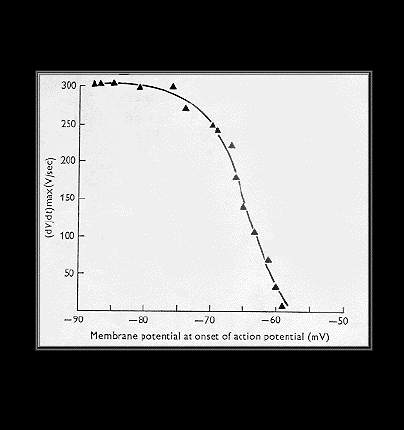
The decreased upstroke velocity of premature responses arising during the relatively refractory period is a manifestation of the voltage dependence of the rapid sodium inward current, the current responsible for the upstroke in normal atrial, Purkinje and ventricular myocardial fibers. This relationship is shown here. The maximum rate of rise of the ventricular action potential upstroke, dV/dv max is shown on the vertical axis and the membrane potential at the onset of depolarization is shown on the horizontal axis. This relationship is important because the rate at which each individual fiber depolarizes, i.e. the maximum rate of rise of the action potential upstroke, is the most important determinant of conduction velocity. The maximum rate of rise is at its 100% value (300V/sec) at membrane potentials between -80 and -90 mV. At less negative values, the maximum rate of rise decreases progressively and at -60 mV, the fiber is virtually inexcitable.
